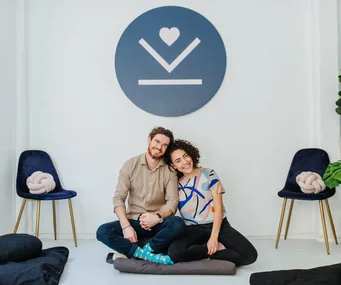You’ve read about the benefits of meditation and now you want to try it. But how do you know which style will be best for you?
“Meditation should be simple,” says yoga teacher and energy healer Patty Kikos.
“It’s about finding a style that’s right for you. Each style has the same goal: to change your mindset.”
But not all styles will suit everyone.
“It’s important not to go to a class just because your friend loves it,” Patty explains. “You’ve got to find a style that resonates with you.”
To help you get started, here are five popular styles to try…

You’ve got to find a meditation style that resonates with you. (Source: Getty)
Guided Meditation
“Guided meditation is the most popular and one of the best types of meditation for beginners, because it requires little preparation and thought,” says Deborah Fay, holistic coach and author of 6 Keys to Happiness.
It can be done as a group or on your own, and involves being guided by a trained practitioner or teacher, or by using a recording or video.
The guidance keeps you on track and leads you to visualisation – a process where you generate mental imagery – to recreate sensory perceptions and feelings of relaxation.
How to do it: YouTube and iTunes are great resources of free guided meditations.
Find a quiet place, put on headphones and be guided to a relaxed and peaceful state.

Find a quiet place, put on headphones and be guided to a relaxed and peaceful state. (Source: Getty)
Breathing meditation
This is a type of Buddhist meditation that focuses on the movement of breath within you, to calm your mind and relax your body.
“When we expel oxygen from our lungs, we make way for the new prana, or air, to come in,” Patty says. “It’s a wonderful way for us to open ourselves up to new thought patterns, so we’re not continuously repeating the same emotions, feelings or thoughts.”
How to do it: Find somewhere comfortable, then practise breathing through your nose while keeping your chest and belly still.
Focus for about 10 minutes. “The purpose of this is to slow down your breathing, and primarily slow down your mind,” says Patty.

Find somewhere comfortable, then practise breathing through your nose while keeping your chest and belly still. (Source: Getty)
Body-scan meditation
The best part of this technique is that it can be done while you’re lying down.
“It’s where you scan different parts of the body, usually beginning at the top of your head and finishing with your toes,” Patty says.
When practised regularly, it can help your mind focus as it shifts your attention from one place to another.
“As a beginner, you wouldn’t be expected to do this on your own because you’d get so distracted,” she explains.
How to do it: “If you’re a beginner, you’ll need to be led by a practitioner, teacher, or by a recording,” Patty says. Lie in a comfortable position on your back with your arms slightly away from your body. Then, while focusing on your breathing, move your attention through your body, step-by-step.

While focusing on your breathing, move your attention through your body, step-by-step. *(Source: Getty)
Sound Meditation
Practising this method is a great way to reduce stress and promote relaxation.
Each sound creates a vibration in a different part of the body that can be used as a focal point for your meditation.
How to do it: There are several ways: focusing on sounds around you, or listening to the silence between each sound.
Another method is to use mantras – choose one and repeat for 15 minutes daily.

Focus on the sounds around you. (Source: Getty)
Movement meditation
This is great for those who are always on the go.
“It could be focusing on a particular mantra as you walk, a conscious dance where you move to the beat of the music, or you match your movements to a mantra you repeat and move to,” Patty explains.
“The repetitive movements are a nice way to reprogram your cellular memory. And when you add movement, you’re also adding a bit of fluidity to your meditation,” she says.
“It’s also a great way to get kids into meditation.”
How to do it: This requires finding the right music, and a location where you can move freely without interruption or danger of hurting yourself or others.
Close your eyes and move in a freestyle fashion as the music guides you – there’s no right or wrong way to do this.

Close your eyes and move in a freestyle fashion. (Source: Getty)

